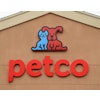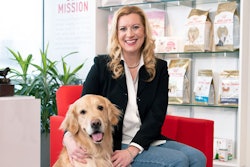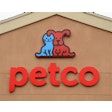
The U.S. pet food industry uses 8.65 tons of animal- and plant-based ingredients for dog and cat food annually, contributing US$6.9 billion to the country’s agricultural economy. That’s according to a new report, “Pet Food Production and Ingredient Analysis,” jointly funded and released by the Institute for Feed Education and Research, North American Renderers Association and Pet Food Institute (PFI).
I imagine many people will join me in considering this very welcome and long-needed information. At Petfood Industry, we often receive questions from pet food professionals about the usage of various pet food ingredients – data that has always been difficult to find. (With the exception of commodity ingredients, if you have the knowledge and time to dig through pages and pages of data from the US Department of Agriculture.) So I congratulate these organizations on undertaking this research and sharing it freely with the industry.
Top pet food ingredients by volume, value
The research and analysis of pet food ingredient usage was conducted by Decision Innovation Solutions, an economic research and analysis firm. Besides its own research, it used a base of pet food sales data purchased from Nielsen, resulting in an overall picture of the market at US$30 billion and 9.8 million metric tons in retail sales in 2018. Not surprisingly, dry dog food was the largest category in both value and volume sales that year, at US$11.2 billion and 5.6 million metric tons, respectively.
Highlights of the ingredient research include:
- Pet food made in the U.S. uses 542 standardized ingredients (taken from retail product labels), with 164 of those ingredients used in both dog and cat food.
- Aggregated into overall categories by ingredient type, farm and mill-based products had the highest usage, at just over 4 million tons and representing a value of US$1.4 billion. (This category is quite broad, comprising grains and oilseeds, processed grain and oilseed products, dairy products, egg products, forages, fruits, herbs, nuts, root crops, sweeteners, tree oils and vegetables.)
- While animal protein products appeared the most frequently on pet food labels, with nearly 6,000 listings (more than 2,000 over the next category, fruits and vegetables), when analyzed by specific source for volume, meat and poultry products ranked second at 2.1 million tons. But because of their higher cost, their value was highest at US$3.2 billion.
- Next were rendered protein meals at 1.5 million metric tons and US$563 million, followed by animal and poultry fats at 289,037 tons and US$153 million.
- Fish products ranked fourth overall, at 198,671 metric tons and US$893 million. Other categories included broth ingredients, water and minerals. (Note: The study did not include other additives such as vitamins, preservatives, colors or flavors; the organizations said that while those additives are important to pet foods, their volume is very low.)
- Breaking down the ingredient sources further by weight, whole grains ranked first at 1.87 million metric tons, followed by chicken (854,988 tons), meat and bone meal (635,652 tons), corn gluten meal (476,599 tons) and soybean meal (437,251 tons).
- By value, beef ranked first at US$1.22 billion, followed by lamb (US$691 million), chicken (US$650 million), salmon (US$430 million) and chicken broth (US$353 million).
- The top five states contributing ingredients for pet food are Missouri, Kansas, Pennsylvania and Ohio, USA, with Missouri alone contributing nearly US$1 billion worth.
Pet food’s contribution to U.S. economy
While many people and pet food businesses will find this ingredient data very interesting and useful, there is more meaning behind the research, and one of the motivating factors for why the three organizations funded it: further proving the worth of pet food to the U.S. economy. According to the report, 519 pet food manufacturing facilities are located in 42 of the 50 U.S. states. This contributes to what the sponsoring organizations called “upstream” volume and sales.
“The purchase of these products from farmers and farmer-product processors stimulates additional upstream economic activity to other related agricultural industries via the multiplier effect,” read a press release on the report. “The exchange of pet food ingredients leads to the purchase of an additional US$5.3 billion of important materials and services for farmers and farm processors, such as crop inputs, machinery and labor. In addition, those suppliers buy an additional $4.1 billion in services, equipment and labor to meet related needs.”
Dana Brooks, president and CEO of PFI, stated it this way: “This data is an important step in helping to quantify the economic value this industry brings to our economy and all of U.S. agriculture. As pet lovers, we’ve known the value that pets bring to our lives, but can now further confirm the significance of the entire pet food industry.”
During a webinar about the report, Brooks also pointed out the sustainability role of pet food ingredients liked dried distillers grains from the brewing and liquor industries, rendered protein meal and other animal proteins like organ meats. They use leftover or unwanted ingredients from the human food industry (also known as by-products) that would otherwise go to waste.


















